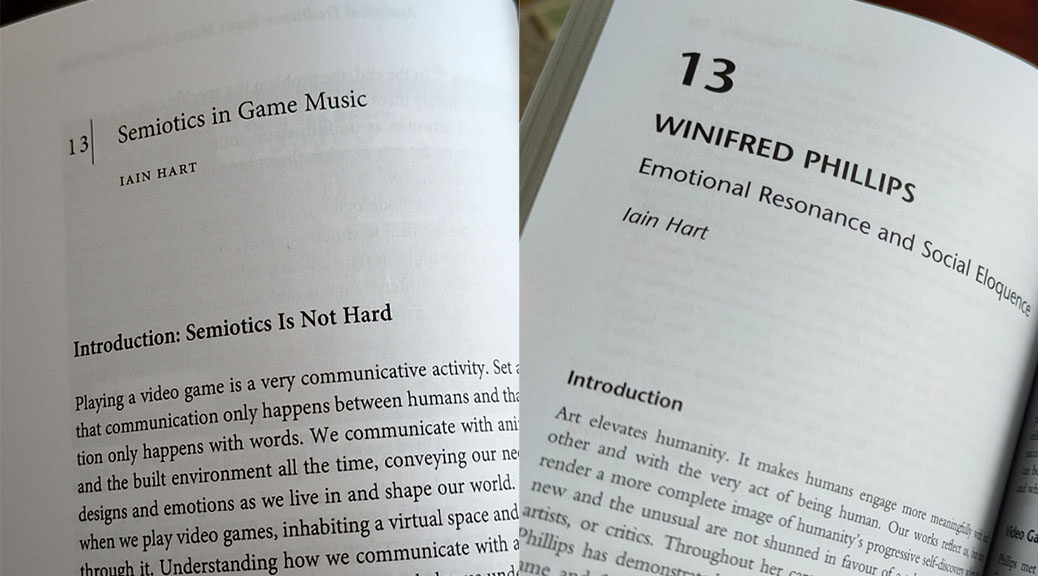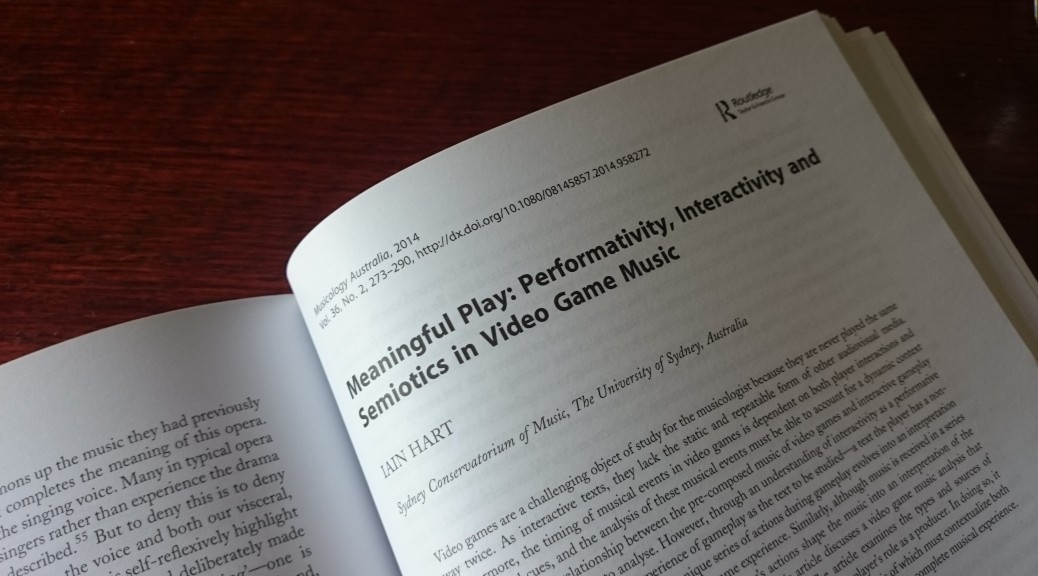I have recently (by which I mean this year – what even is time anymore) had two book chapters published!
The first is a chapter in The Cambridge Companion to Video Game Music, edited by Melanie Fritsch and Tim Summers. The chapter is called “Semiotics in Game Music”, perhaps unsurprisingly! I really enjoyed writing this one, as the brief was to write for an undergraduate audience and I took that as affording a slightly less formal tone. The subject is essentially what it says on the tin: a slightly simplified version of my theory of ludomusicological semiotics. The case study of the themes of Morrowind, Oblivion, and Skyrim was particularly fun to write, as I observed a link I hadn’t noticed before between the Morrowind and Skyrim themes (which was probably obvious to every other fan of the Elder Scrolls games).
The second is a chapter in Women’s Music for the Screen, edited by Felicity Wilcox, on the career and works of Winifred Phillips. The case study of the chapter is on the music of Assassin’s Creed III: Liberation, which is a fantastic score. Phillips wove together several geographical and sociocultural influences to create a musical experience that makes the game world more real than real. I found this particularly impressive given the game was originally developed for mobile phones, a platform where music (and, indeed, sound) has often been regarded as optional (though I hasten to note that this is now even less accurate than it would have been when Liberation was developed).
It has been an absolute honour for my writing to become a part of these two volumes. Please go and have a read if you can!



